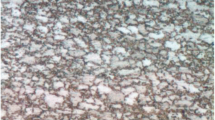Abstract
Resistance spot welding is an essential welding mechanism for joining two or more metal sheets together in automotive industries. The mechanical assemblies are easily joined at discrete spots using high current flow through the area of concentration. It is easily achieved by compressing the base metals together to a certain pressure using copper electrode caps and allow the high current to flow through the concerned areas. The heat generation due to the current flow causes the metal sheets to be fused and consequently form bonds between base metals. The molten areas of base metals undergo solidification process by itself when the current flow is utterly stopped. Basically, the weld growth in any joint is determined by its process-controlling parameters, particularly the welding current, weld time, electrode force, and electrode tip. In these experiments, the welding current and weld time variations were carried out to characterize the weld growth for three types of joints mainly for stainless steel, mild steel, and both steel mixed joint. A pneumatically driven 75-kVA spot welder was used to accomplish the entire welding processes, and the welded samples were later subjected to tensile, hardness, and metallurgical tests to relate the diameter growth, loading force during tensile test, failure crack initiation, post-failure crack propagation direction, macro and microstructural changes, and also the hardness changes due to solidification process. Assessing the experimental results of 2-mm thickness of materials revealed that the welded areas’ characteristics have been varied from its original states to enriched states, in terms of shearing strength and hardness distribution as well as the microstructural orientation.
Similar content being viewed by others
References
Aravinthan A, Nachimani C, (2011) Analysis of spot welds growth on mild and stainless steel (1 mm). Welding Journal, August: 143–147
Cha BW, Na SJ (2003) A study on the relationship between welding conditions and residual stress of resistance. J Manuf Syst 22:31–40
Amuda MOH, Mridha S (2009) Micro structural features of AISI 430 ferritic stainless steel weld produced under varying process parameters. Int J Mech Mater Eng 4(2):160–166
Jamasri MN, Ilman R, Soekrisno T (2011) Corrosion fatigue behavior of RSW dissimilar metal welds between carbon steel and austenitic stainless steel with different thickness. Procedia Eng 10:649–654
Bayraktar E, Moiron J, Kaplan D (2006) Effect of welding conditions on the formability characteristics of thin sheet steels: mechanical and metallurgical effects. J Mater Process Technol 175:20–26
Triyono A (2009) Comparative study of fatigue assessment methods with and without considering residual stress on resistance spot-welded unequal sheet thickness stainless steel. Int J Eng Technol 11:456–462
Marashi P, Pouranvari M, Amirabdollahian S, Abedi A, Goodarzi M, (2008) Microstructure and failure behavior of dissimilar resistance spot welds between low carbon galvanized and austenitic stainless steels. Materials Science and Engineering A: 175–180
Pouranvari M (2011) Analysis of fracture mode of galvanized low carbon steel resistance spot welds. Int J Multidiscip Sci Eng 2(6):66–72
Aravinthan A, Nachimani C (2011) Metallurgical study of spot weld growth on mild steel with 1 mm and 2 mm thicknesses. J Inst Eng Malaysia 72:36–42
Shamsul JB, Hisyam MM (2007) Study of spot welding of austenitic stainless steel type 304. J Appl Sci Res 3(11):1494–1499
Lee WS (2004) Deformation and failure response of 304L stainless steel SMAW joint under dynamic shear loading. Mater Sci Eng A 381:206–215
Darwish SM (2003) Weld bonding strengths and balances the stresses in spot welded dissimilar thickness joints. J Mater Process Technol 134:352–362
Darwish SM, Al-Samhan AM (2004) Peel and shear strength of spot-welded and weld-bonded dissimilar thickness joints. J Mater Process Technol 147:138–146
Kent P, Von M, Henning EN (2000) Comparison of peel bond and shear tensile test methods for needle punched geo synthetic clay liners. Geotext Geomembr 18:203–214
Khodabakhshi F, Kazeminezhad M, Kokabi AH (2011) Mechanical properties and microstructure of resistance spot welded severely deformed low carbon steel. Mater Sci Eng A 15:356–343
Dursun O, Zyurek Z (2008) An effect of weld current and weld atmosphere on the resistance spot weld ability of 304L austenitic stainless steel. Mater Des 29:597–603
Fukumoto S, Fujiwara K, Toji S, Yamamoto A (2008) Small-scale resistance spot welding of austenitic stainless steels. Mater Sci Eng A 492:243–249
Pouranvari M, Marashi SPH (2010) Key factors influencing mechanical performance of dual phase steel resistance spot welds. Sci Technol Weld Join 15:149–155
Gould JE, Khurana SP, Li T, (2006) Predictions of microstructures when welding automotive advanced high-strength steels. Welding Journal 86:111s–116s
Pilar DT, Oscar M, Manuel L (2011) Combined effect of resistance spot welding and post-welding sensitization on the degree of sensitization of AISI 304 stainless steel. Corros Sci 53:2670–2675
Author information
Authors and Affiliations
Corresponding author
Rights and permissions
About this article
Cite this article
Charde, N., Yusof, F. & Rajkumar, R. Material characterizations of mild steels, stainless steels, and both steel mixed joints under resistance spot welding (2-mm sheets). Int J Adv Manuf Technol 75, 373–384 (2014). https://doi.org/10.1007/s00170-014-6158-z
Received:
Accepted:
Published:
Issue Date:
DOI: https://doi.org/10.1007/s00170-014-6158-z




